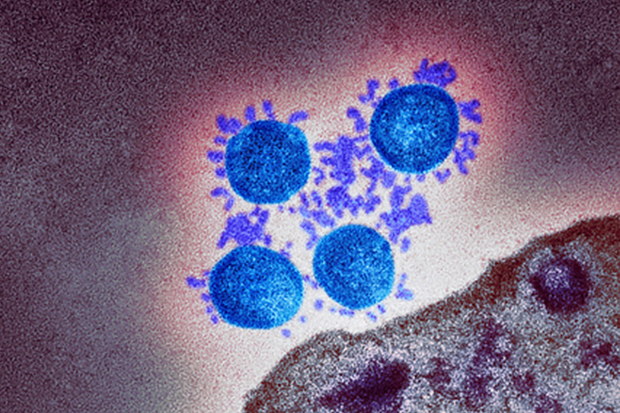Lateral flow testing – new rapid tests to detect COVID-19

Coloured transmission electron micrograph (TEM) of a SARS-CoV-2 coronavirus particle isolated from a UK case of the disease Covid-19.
Lateral flow devices (LFDs) are one of the new tools being used to help us to detect and fight COVID-19. We put any prospective test through a rigorous validation programme, which PHE Porton Down has developed in conjunction with the University of Oxford.
We know that between one in four and one in three people who have coronavirus never show any symptoms but that does not mean they are not infectious.
These devices can help identify people who have high levels of virus who do not have symptoms and would not otherwise be coming forward for a test.
Public Health England and Oxford University have performed extensive clinical validation and field evaluations to assess and understand the performance of the tests we are using in communities and care homes. These tests detect the majority of cases with high levels of virus, who are the most likely to transmit the virus. These tests can reliably be used to detect individuals with the virus that we would not otherwise be able to find. Every positive individual detected can stop a chain of transmission once these individuals isolate for 10 days.
How do lateral flow tests work?
Watch our animated explainer to find out
pic.twitter.com/f3qlCMb0xh
— UK Prime Minister (@10DowningStreet) November 16, 2020
They are quick and convenient prior to a care home visit allowing results to be delivered in under 30 minutes.
They are one of the tools we can use to reduce the risk of transmission in care homes. They need to be used in conjunction with PPE and other infection control methods to keep residents, their loved ones and staff safe.
They will help make planned visits safer by identifying visitors unknowingly carrying high levels of the virus before they enter.
It is impossible to eliminate risk entirely, but it is important to achieve the right balance between the increased risk of infection transmission and the clear benefits to the mental and physical health of residents and their families which visiting enables.
We already have highly reliable PCR tests that are used across NHS Test and Trace, with capacity to carry out over 500,000 tests every day. However, PCR tests are prioritised for individuals with COVID-19 symptoms so that they can get the treatment they need, and we can trace their contacts and break chains of transmission.
LFDs alone aren’t a silver bullet for stopping the spread of the virus. But we are confident that they can detect large numbers of individuals in a rapid and timely manner. If used in combination with other vital infection prevention control measures such as wearing appropriate PPE, washing hands regularly and social distancing, they are another tool to allow people to have that vital time with those they love while helping to keep them safer.
View original article
Contributor: Susan Hopkins

